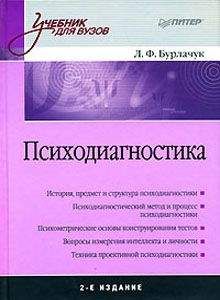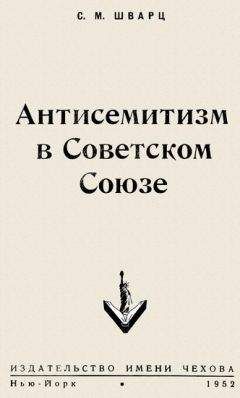American Educational Research Association, American Psychological Association, and National Council on Measurement in Education (1985). Standards for educational and psychological testing. Washington, D. C: American Psychological Association.
American Psychiatric Association. (1980). Diagnostic and statistical manual of mental disorders (3rd ed.). Washington, DC: American Psychiatric Association.
American Psychiatric Association. (1994). Diagnostic and statistical manual of mental disorders (4th ed.). Washington, DC: American Psychiatric Association.
American Psychological Association (1986). Guidelines for computer-based tests and interpretations. Washington, DC: Author.
American Psychological Association (1987). General guidelines for providers of psychological services. American Psychologist, 42, 712–723.
American Psychological Association (1992). Ethical principles of psychologists and code of conduct. American Psychologist, 47, 1597–1611.
American Psychological Association Committee on Psychological Tests and Assessment (1996). Statement on the disclosure of test data. American Psychologist, 51, 644–648.
American Psychological Association, Task Force on the Delivery of Services to Ethnic Minority Populations (1993). Guidelines for providers of psychological services to ethnic, linguistic, and culturally diverse populations. American Psychologist, 48,45–48.
American Psychological Association. (1967). Casebook on ethical standards of psychologists. Washington, DC: American Psychological Association.
American Psychological Association. (1981). Ethical principals of psychologists. Washington, DC: American Psychological Association.
American Psychological Association. (1985). Standards for educational and psychological tests. Washington, DC: American Psychological Association.
American Psychological Association. (1986). Guidelines for computer-based test interpretations. Washington, DC: American Psychological Association.
American Psychological Association. (1987). General guidelines for providers of psychological services. American Psychologist, 42, 7.
American Psychological Association. (1988). Computer use in psychology. Washington, DC: American Psychological Association.
American Psychological Association. (1992). Ethical principles of psychologists and code of conduct. American Psychologist, 47, 1597–1611.
Anastasi, A. (1982). Psychological testing (5th ed.). New York: Macmillan.
Anastasi, A. (1996). Psychological testing (7th ed.). New York: Macmillan.
Anderson, G.J., amp; Walberg, H.J. (1976). The assessment of learning environments. Chicago, IL: University of Illinois.
Anderson, A. M. (1982). The great Japanese IQ increase. Nature, 297, 180–181.
Andrews, L. W, amp; Gutkin, Т. В. (1991). The effects of human versus computer authorship on consumers' perceptions of psychological reports. Computers in Human Behavior, 7,311–317.
Angleitner A. amp; J. S. Wiggins (Eds.) (1986). Personality assessment via questionnaires (p. 143–165). Berlin: Springer-Verlag.
Anglietner, A. amp;., Wiggins, J. S (Eds.) (1986). Personality assessment via questionnaire:
Current issues in theory and measurement. Berlin: Springer-Verlag.
Aronow, E., amp; Reznikoff, M. (1976). Rorschach content interpretation. New York: Grune amp; Stratton.
Aronow, E., Reznikoff, M., amp; Moreland, K. L. (1995). The Rorschach: Projective technique or psychometric test? Journal of Personality Assessment, 64, 213–228.
Aronow, E., Reznikoff, M., amp; Moreland, K. L. (1995). The Rorschach: Projective technique or psychometric test? Journal of Personality Assessment, 64, 213–228.
Arthur, D. (1994). Workplace testing. New York: American Management Association.
Assessment Psychology (2003). Handbook of Psychology. V. 10. New Jersey Wiley and Sons, Inc.
Association for Measurement and Evaluation in Guidance. (1984). Guide to microcomputer software in testing and assessment. Washington, DC: American Association for Counseling and Development.
Bagnato, S.J. (1991). Assessment for early intervention: Best practices for professionals. NY: Guilford Press.
Baillargeon, J., amp; Danis, С (1984). Barnum meets the computer: A critical test. Journal of Personality Assessment, 48, 415–419.
Baltes, P. В., Brim, O. G (Eds.) (1984). Life-span development and behavior. V. 6. New York: Academic Press.
Baron, J. (1985). Rationality and intelligence. Cambridge: Cambridge University Press.
Barton, P. E., amp; Coley, R.J. (1994). Testing in America's Schools. Princeton, NJ: Educational Testing Service.
Behling О., Law K.S. (2000). Translating Questionnaires and Other Research Instruments. Thousand Oaks, CA: SAGE.
Bellack, A. S. amp; Hersen, M. (Eds.) (1988). Behavioral assessment: A practical handbook (3rd ed.). New York: Pergamon.
Bellak, L. (1993). The TAT, CAT, and SAT in clinical use (5th ed.). New York: Grune amp; Stratton.
Bennett, R. E., amp; Ward, W. C. (1993). Construction versus choice in cognitive measurement: Issues in constructed response, performance testing, and portfolio assessment. Hillsdale, NJ: Lawrence Erlbaum.
Benton, D. (1992). Vitamin and mineral intake and human behaviour. In A. P. Smith amp; D.Jones (Eds.), Handbook of human performance (Vol. 2) (p. 25–47). Cambridge:
Cambridge University Press.
Berk, R. A. (1982). Handbook of methods for detecting test bias. Baltimore, MD: Johns Hopkins University Press.
Berk, R. A. (Ed.) (1984). A guide to criterion-referenced test construction. Baltimore, MD:
Johns Hopkins University Press.
Beutler, L. E., amp; Berren, M. R. (Eds.). (1995). Integrative assessment of personality. New York: Guilford.
Binet, A., amp; Simon, T. (1908). The development ol inlant intelligence. The Annals of Psychology, 14, 1-94.
Bishop, D. V. M. (1977). The P Scale and Psychosis J. Abnorm. Psychol, 86, № 2,127–134.
Blake, J. (1989). Number ol siblings and educational attainment. Science, 245, 32-6. Bouchard, T. J., Jr. (1976). Genetic factors in intelligence. In A. R. Kaplan (Ed.), Human behavior genetics. Springfield, IL: Charles C. Thomas.
Blandenstein, K., Pliner, P. amp; Polivy J. (Eds.) (1980). Assessment and modification of emotional behavior. New York: Plenum.
Blau, Т. Н. (1991). The psychological examination of the child. New York: Wiley.
Block J. (1977). The Eysencks and psychoticism./. Abnorm. Psychol, 86, № 6, 653–654.
Block, J. (1977). P Scale and Psychosis: Continued Concerns./. Abnorm. Psychol., 86, № 4,431–434.
Block, J. (1978). The Q-sort method. Palo Alto, CA: Consulting Psychologists Press.
Bloom, B. S. (1964). Stability and change in human characteristics. New York: Wiley.
Boring, E. G. (1957). A history of experimental psychology. NY: Appleton-Century-Crolts.
Bouchard, T. J., Jr. (1982). [Review ol «Identical twins reared apart: A reanalysis.»] Contemporary Psychology, 27, 190-1.
Bouchard, T. J., Jr. (1982). [Review ol «The intelligence controversy.»] American Journal of Psychology, 95, 346-9.
Bouchard, T. J., Jr. (1983). Do environmental similarities explain the similarity in intelligence ol identical twins reared apart? Intelligence, 7, 175-84.
Bouchard, Т. J., Jr. (1993). The genetic architecture of human intelligence. In P. A. Vernon (Ed.), Biological approaches to the study of human intelligence. Norwood, NJ:
Ablex.
Bouchard, T. J., Jr. (1993). Twins: Nature's twins told tale. In T.J. Bouchard, Jr., amp; P. Propping (Eds.), Twins as a tool of behavior genetics. Chichester, England: Wiley amp; Sons Ltd.
Bouchard, T. J., Jr. (1993a). Genetic and environmental influences on adult personality:
Evaluating the evidence. In I. Deary amp; J. Hettema (Eds.), Basic issues in personality. Dordrecht: Kluwer Academic Publishers.
Bouchard, T. J., Jr., amp; McGue, M. (1981). Familial studies of intelligence: A review. Science, 212, 1055-9.
Bouchard, T. J., Jr., amp; Segal, N. L. (1985). Environment and IQ. In B.J. Wolman (Ed.), Handbook of intelligence: Theories, measurements, and applications. New York: Wiley.
Bouchard, T. J., Jr., Lykken, D. Т., McGue, M., Segal, N. L, amp; Tellegen, A. (1990). Sources of human psychological differences: The Minnesota study of twins reared apart. Science, 250, 223-8.
Bouchard, T. J., Jr., Lykken, D. Т., McGue, M., Segal, N. L, amp; Tellegen, A. (1991). IQ and heredity. Science, 252, 191-2.
Brody E. В., Brody N. (1976). Intelligence: Nature, determinants and consequences. New York: Academic Press.
Brody, N. (1992). Intelligence (2nd ed.). San Diego: Academic Press. Bull, R amp; Sprin-ger-Verlag.
Broman, S., Nichols, P., Kennedy W. (1975). Preschool IQprenatal and early developmental correlates. New Jersey: Lawrence Erlbaum Associates.
Bronfenbrenner, U. (1991). The nurture of nature. Behavioral and Brain Sciences, 14(3), 390-1.
Bronfenbrenner, U., amp; Ceci, S.J. (1993). Heredity, environment, and the question «How?» – A first approximation. In R. Plomin amp; G. E. McClearn (Eds.), Nature, nurture and psychology (p. 313-23). Washington DC: American Psychological Association.
Brown, F. G. (1976). Principles of Educational and Psychological Testing (second edition). New York: Holt, Rinehart amp; Winston.
Brozek, J. (1972). To test or not to test: trends in the Soviet views.Joumal of the History of the Behavioral Sciences, 8, 243–248.
Burisch, M. (1984). Approaches to personality inventory construction. American Psychologist, ЗЯ 214–227.
Burks, В., amp; Tolman, R. (1932). Is mental resemblance related to physical resemblance in sibling pairs? Journal of Genetic Psychology, 40, 3-15.
Burlatchuk L. F. (1994) Projective Approach to Personality Study in Soviet Psychology: A Summary of Research // Rorschachiana. Yearbook of the International Rorschach Society, 19, 78–96.
Burlatchuk L. F. (1998) Natural-scientific paradigm in a psychological personality assessment: Necessity of a return to psychology. Conference Abstracts. – 9th European Conference on Personality. University of Surrey, 7-11 July 1998, 108–109.
Burt С (1963). Is intelligence distributed normally? British Journal Statistical Psychol., 16, 175–190.
Butcher, J. N. (1987). Computerized psychological assessment: A practitioner's guide. New York: Basic Books.
Caldwell, B. M., amp; Bradley, R. H. (1984). Home observation for the measurement of the environment. Little Rock, AK: University of Arkansas Press.
Campbell, D. T. (1960). Recommendations for АРА test standards regarding construct, trait, and discriminant validity. American Psychologist, 15, 546–553.
Capron, C, amp; Duyme, M. (1989). Assessment of effects of socio-economic status on IQ in a full cross-fostering study. Nature, 340, 552-4.
Casaer, P. (1993). Old and new facts about perinatal brain development./омгяа/ of Child Psychology and Psychiatry, 34(1), 101-9.
Cattell R. B. (1971). Abilities: Their Structure, Growth and action. Boston: Houghton Mifflin Co.
Cattell, R. (Ed.). (1983). Intelligence and national achievement. Washington, DC: The Institute for the Study of Man.
Cattell, R. B. (1950). Personality: A systematic theoretical and factual study. New York:
McGraw-Hill.
Cattell, R. B. (1963). Theory of fluid and crystallized intelligence: A critical experiment. Journal of Educational Psychology, 54, 1-22.
Cattell, R. B. (1980). The heritability of fluid, gf, and crystallized gc, intelligence, estimated by a least squares use of the MAVA method. British Journal of Educational Psychology, 50, 253-65.
Cattell, R. B. (1987). Intelligence: Its structure, growth and action. New York: North Holland.
Cattell, R. B. (1957). Personality and motivation, structure and measurement. New York:
World Book.
Ceci, S.J. (1993). Contextual trends in intellectual development. Developmental Review, 13, 403-35.
Chipuer, H. M., Plomin, R., Pedersen,N. L., McClearn, G. E., amp;Nesselroade,J. R. (1993). Genetic influence on family environment: The role of personality. Developmental Psychology, 2ЯИ0-18.
Ciminero, A. R., Calhoun, K. S. amp; Adams, H. E. (Eds.) (1977). Handbook of Behavioral Assessment (p. 509–554). New York: Wiley amp; Sons.
Cohen, R. J., Swerdlik, M. E., amp; Phillips, S. M. (1996). Psychological testing and assessment: An introduction to tests and measurement. Mountain View, CA: Mayfield.
Coon, H., Carey, G, amp; Fulker, D. W. (1990). A simple method of model fitting for adop-tiondata. Behavior Genetics, 20, 385–404.
Cooper,C, Varma, (Eds) (1997). Processesin individual differences. London: Routledge.
Corcoran, K., amp; Fischer, J. (1994). Measures for clinical practice: A sourcebook (2nd ed.). (Vols. 1–2). New York: Macmillan.
Cronbach, L. J. (1951). Coefficient alpha and the internal structure of tests. Psychometri-ka, 16, 297–334.
Cronbach, L.J. (1970). Essentials of psychological testing. (3rd edition). New York: Harper amp; Row.
Cronbach, L.J., amp; Gleser, G. C. (1965). Psychological tests and personnel decisions. Urba-na, IL: University of Illinois Press.
Cronbach, L. J., amp; Meehl, P. E. (1955). Construct validity in psychological tests. Psychological Bulletin, 52, 281–302.
Das, J. P., Naglieri, J. A., amp; Kirby, J. R. (1994). Assessment of cognitive processes: the PASS. New York: Allyn amp; Bacon.
Dawes, R. M. (1994). House of cards: Psychology and psychotherapy built on myth. New York: Free Press.




